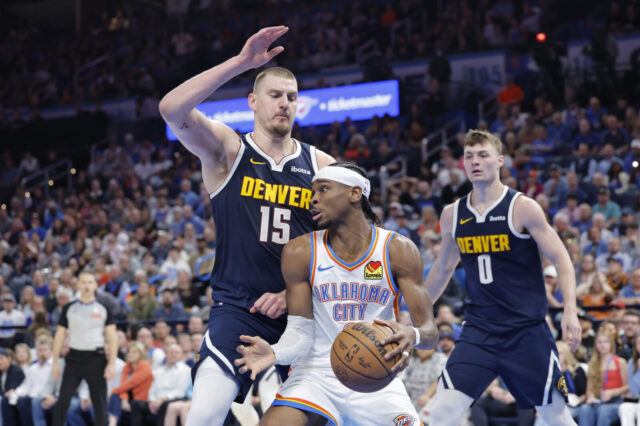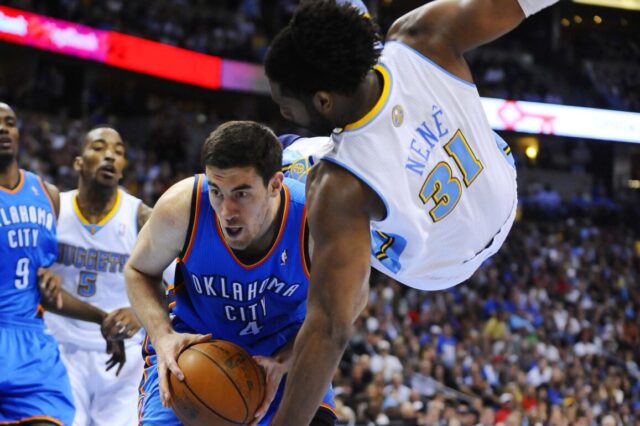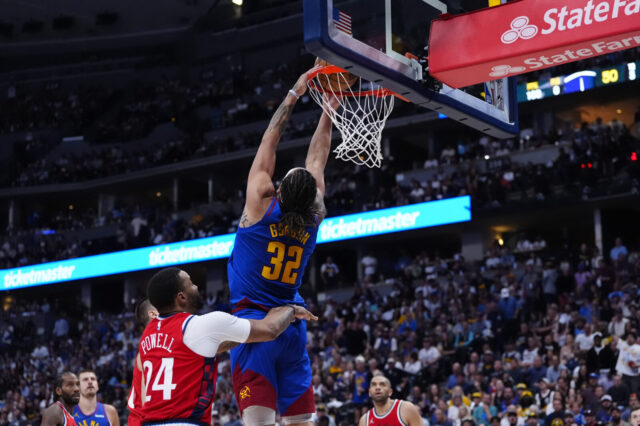When I first started serious draft prep back in June, Jaden Springer was the first player I looked at in-depth. Immediately, I saw a player who would either be drafted too low or would rise up draft boards fairly quickly. It’s unclear which is happening at the moment, but Springer remains one of my favorite prospects to evaluate in the entire 2021 draft class.
A five-star recruit who spent time in North Carolina and Florida (at IMG Academy) during his high school days, Springer was a one-and-done at Tennessee and showcased the elite tools many college and pro scouts believe him to have: athleticism, dynamic driving ability, a high basketball IQ, and defensive chops. It strangely took him and fellow high-level recruit Keon Johnson awhile to move into the starting lineup at Tennessee, but Springer truly showcased his talents when given a bit more freedom to make mistakes. He turned the ball over a bit too much, but the plays he put on film consistently were impressive and should translate well to the pros.
Let’s talk about him.
Jaden Springer, Combo Guard, Tennessee
Vitals
Height: 6’4” in shoes
Wingspan: 6’8”
Weight: 202
Age: 18 (9/25/2002)
Per Game stats
In his lone season at Tennessee, Jaden Springer averaged 12.5 points, 3.5 rebounds, and 2.9 assists in 25.9 minutes per game. For whatever reason, he and fellow NBA Draft candidate Keon Johnson came off the bench to start the year behind older players despite clearly being better, so the per game numbers are a bit muted. Springer also averaged 1.2 steals and 2.4 turnovers per game, the first number being a solid indicator, the second number being a bit troublesome.
Efficiency wise, Springer shot 47.5% on two-pointers and 43.5% on three-pointers, though the latter number is a bit misleading as well since Springer only attempted 46 threes at the college level. He earned many of his points at the free throw line though, where he shot 81% at the line, one of the higher numbers in the class.
Strengths
Physical Tools
Springer measured at 6’4” in shoes and with a 6’8” wingspan at the combine. He also jumped 41.5 inches in the air while on the move, which is really really high. Springer is the functional size of a good combo guard and has the strength and athleticism to play both positions. He uses his size well in post defense against larger players, and he has to agility to mirror quicker players as well.
Springer utilizes his athleticism in a very functional and intelligent way on both ends of the floor. He loves to get out in transition. He loves to attack the basket. Though he doesn’t have the lightning quick first step of other guards, he sets up his drives well and then uses his core strength to force his way toward the rim, even against bigger players. Springer deals with contact well, hitting contested shots at a solid rate and showcasing an ability to rise above the contact. Given how important shooting efficiently against tough contests can be in a playoff environment, this skill of Springer’s bodes well for the NBA. Some players flinch away from contact, but Springer embraces it and uses it to his advantage.
Defense
The Tennessee freshman was one of the best defensive players in a tough SEC last year. He was pesky on-ball and smart off-ball, performing well for a Tennessee defense that had a couple of strong defenders but no true rim protector to bail him out. Springer was the proper amount of physical at the point of attack, using quick feet, quick hands, and a strong chest to prevent opposing guards from getting to the basket. He could be shot over the top of at times, but he contested as well as can be expected of any 6’4” guard in those situations.
Springer probably won’t be a true “stopper” at the next level, but neither was Gary Harris. He just made things as difficult as he could for opposing guards. Springer is smart and properly physical in the same way. He makes high IQ reads, forces turnovers, and wins games with his defense. He won’t be defending elite big wings at a high level, but he will be able to switch and battle against many of the big wings in the next tier down.
Playmaking and creating potential
Springer doesn’t have elite ball handling, playmaking, or scoring skills, but he’s fundamentally solid at all three. He enjoyed catching the ball in triple-threat position and using his quickness to get to the lane. His strength and hops mentioned above helped him take advantage of defenders that were consistently out of position when trying to guard him.
Springer also showcased some playmaking for others while at Tennessee. His turnovers were pretty high, but he made some solid reads for a program that didn’t really have a true point guard to rely upon. The team was best when it gave Springer the ball, and he did good things with the pressure despite being so young. Without an elite pull-up jumper, he probably won’t ever be a primary playmaker; however, he moves the ball in a smart way, plays advantage basketball, and can be a guy who makes secondary reads off drives from others, curls around screens, and in DHO sets.
Age
Springer won’t turn 19 years old until the Nuggets report for training camp in late September. He clearly still has a long way to go developmentally, but he has a lot of time to get there as well. His game is fairly mature for his age, and he clearly understands things about basketball that some players don’t grasp until their later years. Springer is both ready to contribute now but also has a long way to go before realistically hitting his ceiling.
Weaknesses
Functional Shooting
Don’t let the 43.5% three-point shooting fool you: Springer still has a ways to go as a confident jump shooter. He averaged just 1.8 attempts per game in college, and his jump shooting in general was a definite weakness.
Still, there are clips of him pulling up confidently from the perimeter. They might be few and far between, but the beauty of discussing an 18-year-old prospect is the ability to instill learning and habits at a young age. Plus, shooting can be learned.
If Springer never develops a consistent jumper, he probably won’t ever become a starting caliber player. There’s only so much use for a 6’4” defensive guard that can’t shoot and isn’t a primary playmaker. I expect Springer to correct this weakness though. He shot 81% at the free throw line, often a better indicator for shooting numbers translating to the next level than anything else.
Still, it’s important to monitor his progress here.
Two-foot leaper
Often, Springer leaps off of two feet when driving into the teeth of the defense or attempting to score in transition. Springer jumps off two feet so often actually that many have begun to question whether Springer can maximize his athletic gifts.
There are clips of Springer jumping off one foot though. He can do it. It’s just not something he does as often as one may like in a halfcourt setting.
Remembering back to previous drafts, Donovan Mitchell was also questioned for being a two-foot leaper, and he had to learn how to jump off of one foot more consistently. To me, that success story means that jumping off of one foot can be a learned skill, and the only foundation that needs to be there is athleticism and leaping ability. Mitchell posted a 36.5 inch standing vertical back in 2017. Springer was at 34.5 himself, and that’s probably good enough. In addition, Mitchell only dunks off of two feet anyway.
Size
At 6’4” Springer is going to find that it can be difficult to switch a ton in today’s NBA. Though the league can be downsizing at different points, the best players are often the ones with a built-in height advantage. Springer, if he wants to be an impactful scorer, defender, and overall player, will be at a disadvantage. His athleticism is less of an outlier trait in the NBA, and his lack of a consistent jump shot will definitely hurt him unless he corrects it.
Expected Outcome
Projected Draft Range: Mid to Late 1st round
Denver Stiffs Big Board: 18th overall
NBA Comparison: Derrick White? More athletic Jeremy Lin? Less thick Marcus Smart? Not a great comparison out there, which isn’t a bad thing. He’s still malleable and growing up.
Verdict
I’m a firm believer in Jalen Springer being a starting caliber combo guard in the right situation. The game is played on both ends, and Springer brings athleticism and basketball IQ on both the offensive and defensive side of things. He will move the ball better at the NBA level and will have more space to drive open lanes. His ability to guard will shine through as well.
The questions about the jumper are real, but at 18 years old and having already exceeded 80% at the free throw line, it feels like a correctable issue with the right mentality and execution. Working on his dribble moves will allow him to get to spots he never consistently took advantage of at the college level, and that feels like a part of his game that, if it does happen, would give him some potential star power. He has so many other things already going for him.
The Denver Nuggets probably need to add to their backcourt depth in this year’s draft. With Jamal Murray out to begin next season and Will Barton possibly gone in free agency, the Nuggets only have three healthy guards on the roster: Monte Morris, Facundo Campazzo, and P.J. Dozier.
The Nuggets could use additional defense, playmaking, and athleticism in the backcourt, and Jaden Springer would be a great fit. He isn’t the tallest guard, but he has a ton of skills the Nuggets will need if they want to be championship caliber going forward. He can guard at the point of attack, doesn’t need the ball in his hands all the time to be effective offensively, and he would be a nice complementary weapon to what the Nuggets are building with Jamal Murray, Michael Porter Jr., and Nikola Jokić. Springer doesn’t have to be an elite shooter to pair nicely with those three, but if he becomes even a good one, the rest of his skills would shine in Denver.


